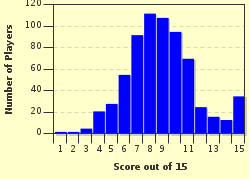Quiz Answer Key and Fun Facts
1. Inflammation is a complex reaction of vascularised tissue to an injurious stimulus.
2. Which of these processes can cause inflammation?
3. Which of these is not a clinical feature of inflammation?
4. What is the name for the protein-rich extravascular fluid produced in inflammation?
5. There is more than one type of discharge caused by inflammation.
6. Which of these processes is NOT one of the cellular events involved in the inflammatory process?
7. The following few questions are about the chemical mediators of inflammation:
What is the main effect of histamine?
8. Which of these is a peptide involved in inflammation?
9. Cytokines can be both pro-inflammatory and anti-inflammatory.
10. Which chemical mediator causes vasoconstriction, bronchoconstriction, leukocyte adhesion, chemotaxis, degranulation and oxidative burst?
11. Which of the following processes is not a step in phagocytosis?
12. Which of the following is not a true inflammatory disease?
13. What is the common name for inflammation of the joints?
14. What is the name given to inflammation of prolonged duration characterised by infiltration of mononuclear cells, tissue destruction and repair involving angiogenesis and fibroblastic proliferation?
15. Which of the following is NOT an outcome of chronic inflammation?
Source: Author
Cara Splash
This quiz was reviewed by FunTrivia editor
crisw before going online.
Any errors found in FunTrivia content are routinely corrected through our feedback system.

